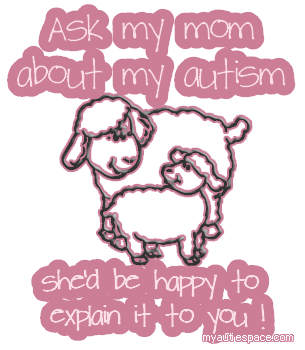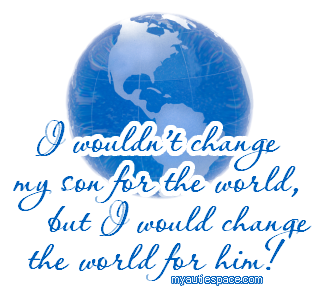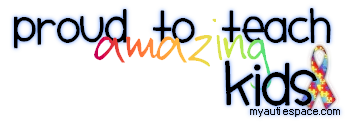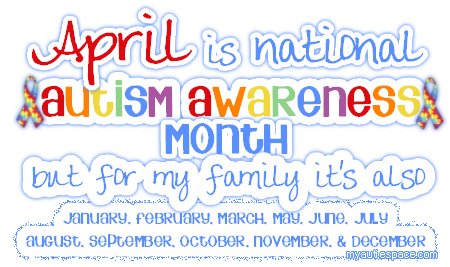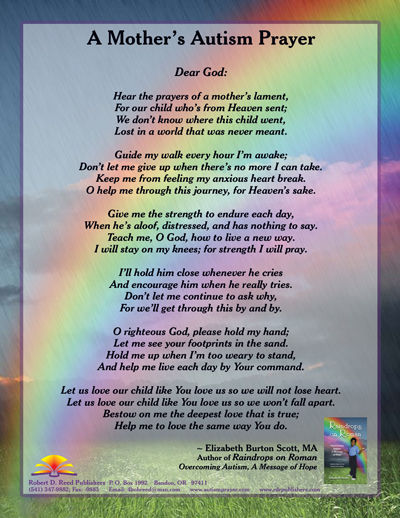
Today is World Autism Awareness Day (or Autism Acceptance Day to some though you can read why I’m sticking with “awareness” for now). As a mom of a child on the Autism Spectrum, every day is Autism Awareness Day in our home but I appreciate those that spend this month trying to learn a bit more about Autism. For those who have Autism and those who love someone who has Autism, April means more special events than normal that are created with our families in mind. I thought I’d share some fun events going on in the Chicago area this month. Some are specifically celebrating Autism Awareness Month, some happen frequently throughout the year, some are special Easter events, and some are just sensory-friendly events I thought I’d add to the list. If you know of more Autism Awareness/Acceptance or sensory-friendly events going on in Chicagoland this month please let me know!

April 6th- Zoos Go Blue at Brookfield Zoo
Throughout the day, special Zoos Go Blue activities will be taking place for families with children on the autism spectrum. The zoo has also designated a quiet break area in the Discovery Center’s Founders Room for those who might be in need of some downtime during the day.
From 11:00 a.m. to noon, the Carousel will have a “quiet hour” with its music turned off. At 1:00 p.m., families can attend a sensory-friendly Dolphins in Action presentation with welcoming remarks from Colleen Shinn, director of community outreach-Midwest and South Central Regions for Autism Speaks. In addition, guests can attend special Zoo Chats to learn about some of the animal ambassadors. These informal talks take place at 11:00 a.m. in the Bramsen Animal Ambassador Pavilion and at 2:00 p.m. at Hamill Family Play Zoo.
The zoo also has several “care kits” that can be checked out on a first-come, first-served basis by families that include noise-reducing headphones, hard copies of visual schedules, autism stickers, and ID bracelets in case a child gets separated from his or her family. In addition, to help families prepare for their visit, several adaptive tools may be downloaded from the zoo’s website at BrookfieldZoo.org/Accessibility. These tools include a visual schedule and a story about the zoo’s Living Coast exhibit that, through illustrations and written descriptions, can help prepare a child for what he or she will see and may feel during their visit.
April 6th- Play Well Day at LegoLand in Schaumburg
LEGOLAND Discovery Center Chicago is teaming up with AUTISM SPEAKTM to provide a brand new sensory friendly LEGO experience! Events occur the first Saturday of every month from 8:30am – 10:00am!
Special accommodations will be made during Play Well Days including:
- Reduction of sound and light levels
- Quiet spaces
- A reduced center capacity
- Staff trained by Autism Speaks
- Discounted admission pricing
Reserve your tickets here.
April 6th- Special Needs Screening of Dumbo at Studio Movie Grill in Chicago & Wheaton
Special Needs Screenings are shown with the lights up and the volume lowered and children are free to move around, talk, or even dance in the aisles during the movie. The sensory friendly screenings are free for children with special needs and their siblings (parental guidance is always suggested). Adult tickets are available at before-noon price. Special Needs Screenings are shown at 11:00am at all SMG locations except EpiCentre.
Get more details here.

April 7th & 14th- Sensory-Friendly Bunny at Various Locations
All families with children with autism and other special needs can enjoy the time-honored tradition of a visit with The Bunny, in a more subdued and calm environment. While visits with The Bunny are free, cherished photo memories will be available for purchase at each sensory-friendly event.
Reservations are limited. Please RSVP to reserve your spot today! Find a list of locations and learn how to register here.
April 13th- PossAbilities Easter Egg Hunt at Calvary Church in Orland Park
At the Easter Celebration egg hunt Calvary leaders want all children to have an enjoyable time. They will have a reserved area for children with special needs, such as sensory or mobility. This space will be away from the crowds and wheelchair accessible. Please register your child by emailing [email protected].

April 13th- Play For All Autism Awareness Celebration at the Chicago Children’s Museum
Join Chicago Children’s Museum and Autism Speaks as they celebrate World Autism Month! This autism-friendly event is a celebration for families affected by autism and will include sensory activities, quiet spaces, and a resource fair.
Free admission will be given to the first 250 children and families with disabilities who register!
For more information, visit: https://bit.ly/2u2PTzZ
April 14th- Special Needs Easter Eggstravaganza in Geneva
Special Needs Easter Eggstravaganza: Experience Easter together!
-For families with children with special needs and their siblings
-Families will travel together on a sensory friendly scavenger hunt to find candy and toy-filled eggs!
-Participate in an interactive experience showing the miracle of Easter.
-The event is FREE and there is NO REGISTRATION required.
-There will be drawings for lots of great prizes!
Get more details here.

April 19th- Bunny Bash in Oswego
Join us for this years Bunny Bash 2019!! This year it will be held at our new Oswego Location! There will be a bounce house, balloon artist, crafts, games and more! Maybe even the Easter bunny will make an apperance! (While this does not state that it’s an Autism/Sensory event it’s hosted by a company that provides ABA therapists.)
April 27th- WE CAN Carnival – Autism Awareness Month in Chicago
Come and join us for the carnival that celebrates the amazing abilities of children in this wonderous event filled with fun and activities! There will be numerous carnival games and prizes, face painting, popcorn, bouncy houses, and the city of Chicago firetrucks and police cars!
This is a FREE event to the autism community! Registration is required, RSVP by 4/24/19: http://bit.ly/2TBDmBQ

April 28th- Sky Zone Cares Sensory Event in Joliet
Enjoy the freedom of jumping. Sensory hours provide a quieter and relaxed jumping experience. Just a chance to jump and smile and know that SKY ZONE CARES!
- Modified safety Measures
- Less crowded environment
- Added staff to support all needs of all jumpers
- Light and sound reduction
Get more details here.
April 28th- Friendship Playdate at Kidville Lincoln Park in Chicago
Children of all ages and abilities can enjoy arts & crafts, sensory gym, and snacks!
This event is free! Please register through the link: bit.ly/TNPnKidville
Looking ahead to events in May that you can register for now (things sell out quickly!)
May 4th & May 11th- Variety at Play Fantasy Amusement Carnival in Aurora
Your child with a disability and family are cordially invited to join Variety the Children’s Charity of Illinois, the Fox Valley Special Recreation Association and the Western DuPage Special Recreation Association for a private carnival event. The carnival will be closed to the general public during these times allowing families with children with any disability extra time to safely enter and exit rides which will be run at slower speeds when possible and for shorter duration if requested. Complimentary ride wristbands, popcorn and cotton candy will be provided along with one game prize per child.
Thank you to Fantasy Amusements for providing this event FREE for families of children with disabilities, their parents/caretakers and siblings. Limit 6 free tickets and 1 date reserved per family. Register here.
May 5th- Low-Sensory Mornings at MSI in Chicago
Low-Sensory Mornings are a series of events dedicated to providing sensory-friendly time with Museum exhibits.
On select dates throughout the year from 9:30 a.m. – noon, MSI’s exhibits will be altered, including lower exhibit volume, dimmer lights and limited crowding. On these days we’ll offer additional accommodations including a designated quiet room offering sensory toys, water and a space to relax. You can also check out noise-reducing headphones and weighted vests for free from Guests Services in the Entry Hall.
Get more details here.
May 6th- Calm Waters at the Shedd Aquarium in Chicago
Calm Waters is an exclusive event for guests with disabilities to explore Shedd Aquarium’s exhibits and experiences in a comfortable and accepting environment. Modifications for this event will include limited capacity and streamlined entry with advance registration.
Family members and companions are welcome. This event is $24.95 (free for members).
You can learn more about Calm Waters here: https://www.sheddaquarium.org/plan-a-visit/visitor-guide/Experiences/calm-waters/
May 18th- Sensory Saturday at the Field Museum in Chicago
This event welcomes families and children with disabilities as well as with sensory processing needs. Siblings, family members, and caregivers are also welcome.
Sensory Saturday is free with museum admission and advance registration, but space is limited to 40 guests so that families can enjoy a crowd-free space. To register, please email [email protected].
The Crown Family PlayLab is geared toward young children, but you’ll find many opportunities for children of all ages and abilities to learn and create through hands-on exploration with tactile opportunities and sensory tools.
Get more details here.
Get my free sensory-friendly Chicago guide for more sensory-friendly fun in Chicago! (This is a work in progress as I’m still adding places!)
To add an event to this list you can email me at: [email protected]. All events MUST be family-friendly and must be for families who have loved ones with Autism or other sensory needs :)

















































































































